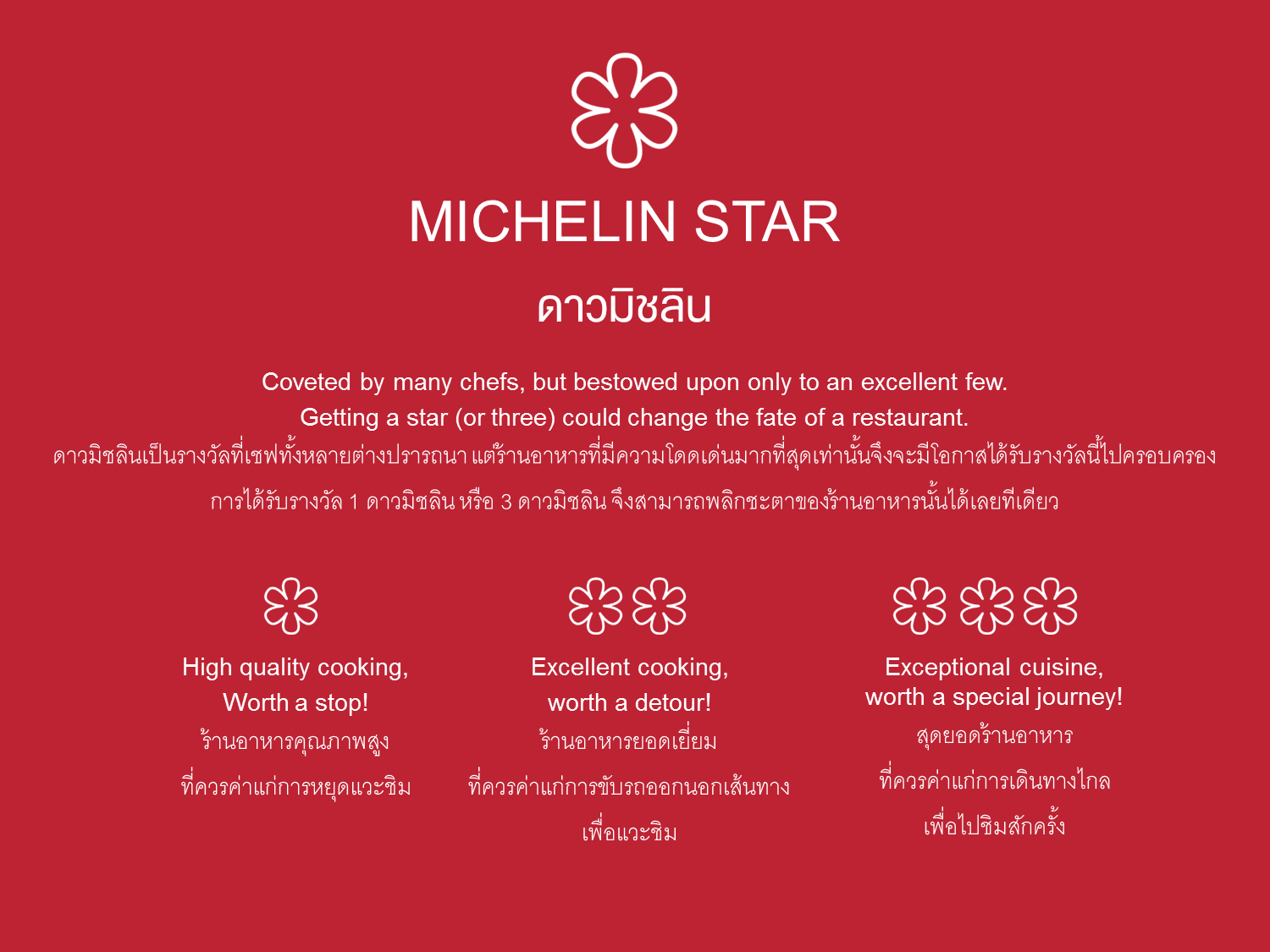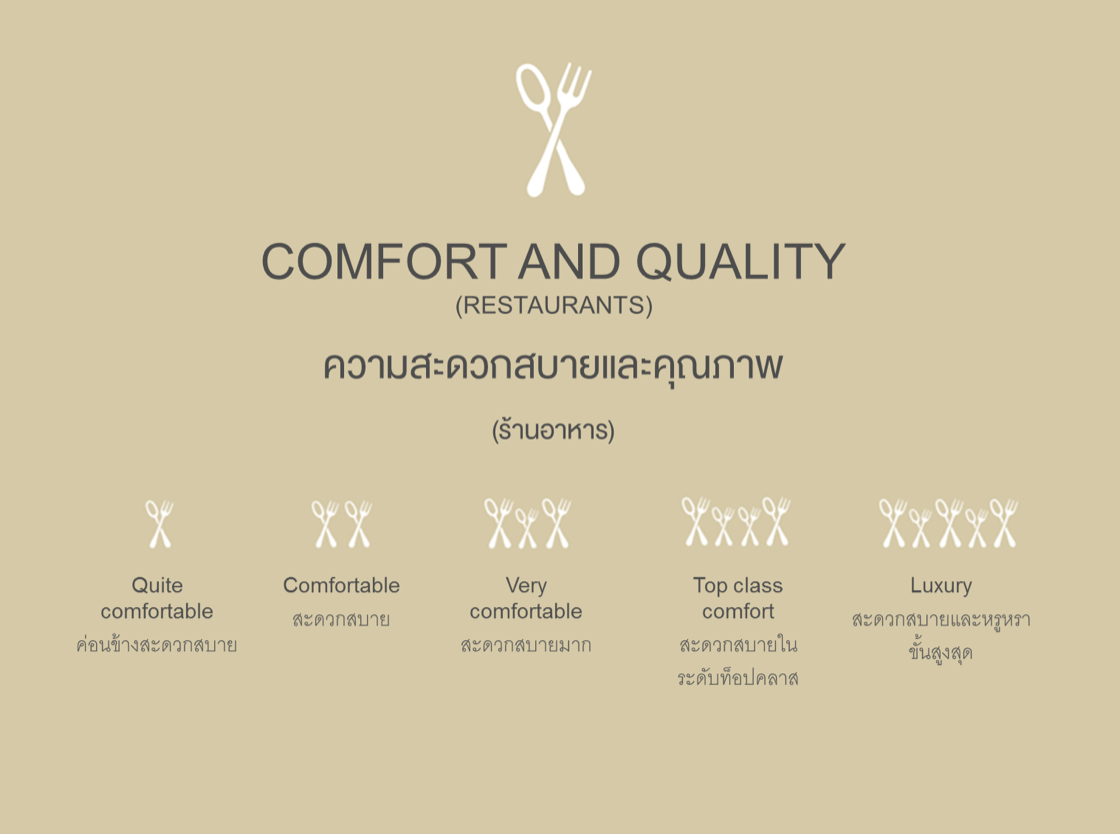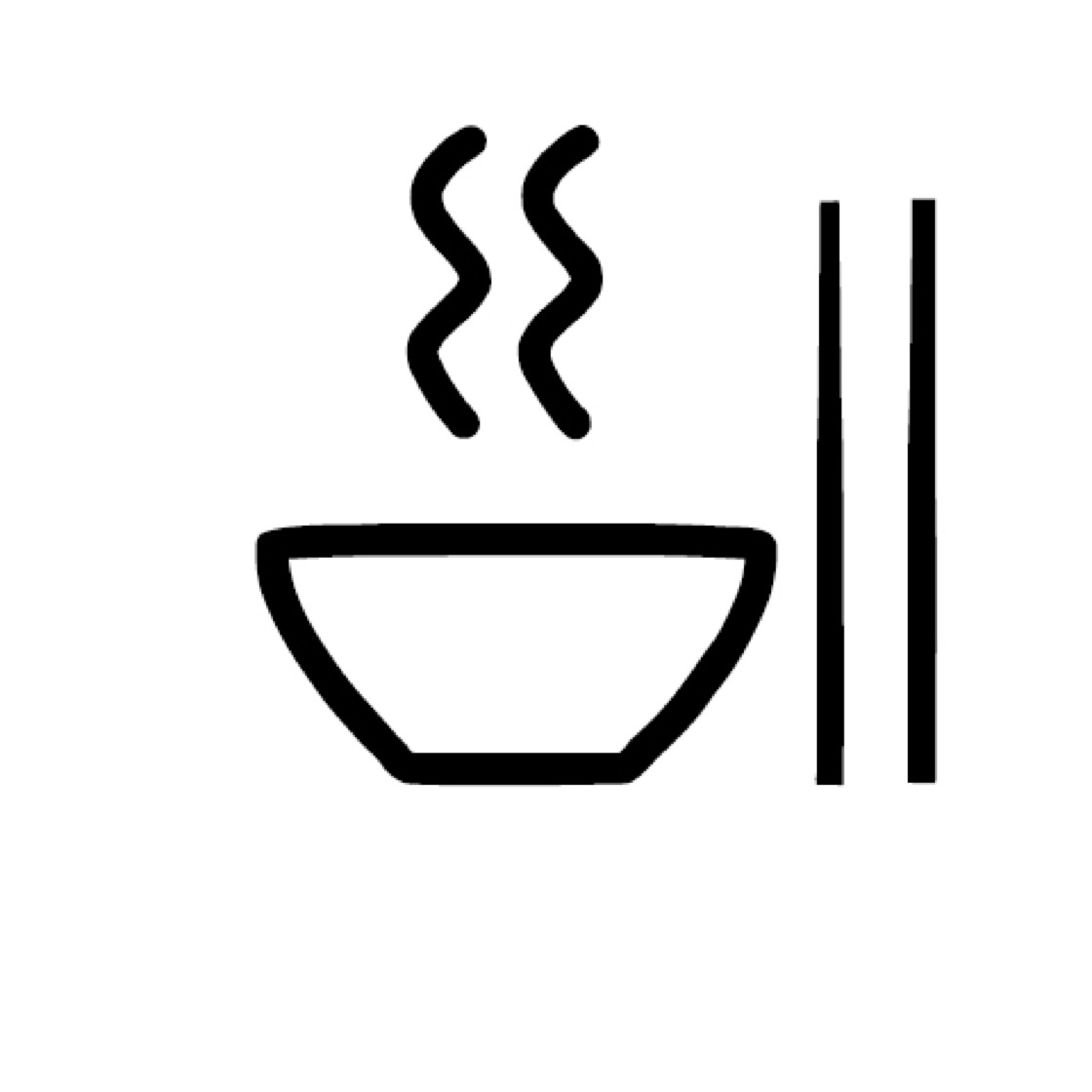If you're here, chances are you know about Michelin's unique restaurant rating system. But how much do you really know about what the coveted MICHELIN Stars stand for? Here's a quick guide to the symbols you'll find in the MICHELIN Guide.
Stars and Covers
The MICHELIN Guide conveys its restaurant reviews through through summaries of the inspectors' experiences and an extensive system of symbols, the most revered of which are its globally renowned MICHELIN Stars. Restaurants may receive one to three MICHELIN Stars for the quality of their food based on five criteria: quality of the ingredients used, mastery of flavor and cooking techniques, the personality of the chef in the cuisine, harmony of flavors, and consistency between visits.
Restaurant inspectors do not look at the interior decor, table setting, or service quality when awarding stars.



Bib Gourmand
Not quite a star, but most definitely not a consolation prize, the Bib Gourmand - named after Bibendum, the friendly Michelin Man and the official company mascot for the Michelin Group - is a just-as-esteemed rating that recognizes friendly establishments that serve good food at moderate prices.
As MICHELIN Guide inspectors travel and taste their way through fine dining establishments around the globe, they are also on the constant lookout for restaurants that offer high-quality food at pocket-friendly prices. These accumulated observations resulted in the creation of a separate rating category to recognize such restaurants.

Initially, restaurants were flagged with a red “R” symbol to indicate to readers that they were destinations that served “good cuisine at reasonable prices”. Namely, a three-course meal with starter, main course and dessert, within a fixed price range (which today stands at €36 in most European cities, US$40 in American cities, HK300 in Hong Kong and Y5,000 in Tokyo).
In 1997, the Bib Gourmand symbol - the image of the Michelin Man licking his lips - was debuted in the MICHELIN Guide for the first time. Since then, Bibendum has become a well-loved beacon for value-seeking diners looking out for good deals.
Thanks to Bibendum and the Bib Gourmand, Michelin inspectors have noted the increase in the number of restaurateurs dedicated to providing authentic dining experiences by way of quality cuisine at affordable prices in approachable and friendly establishments.
Drink Symbols
Restaurants with notable wine, sake and beer lists are recognized with the grape, sake bottle and beer pint symbols respectively.


Interesting Wine List
If you are looking for establishments with an excellent wine list, keep an eye out for this symbol. It covers a spectrum ranging from lists presented by sommeliers in luxury restaurants to simple spaces with a passion for wine.

Interesting View
These three crimson rays indicate particularly breathtaking sceneries for diners to enjoy while tucking into their food.

Terrace Dining
The patio parasol represents the option of terrace dining for the diners, or a relaxing meal in an open-air environment.

Simple Shop
Simple shops that offer great food despite their casual environment are to be found everywhere and that’s no different from the MICHELIN Guide. Not to be confused with the street food category (reserved mostly for hawker stalls), it denotes a humble space where the service and physical aspects are unfussy.

Counter dining
The counter symbol denotes the dining option in an open kitchen concept, where chefs are observed up close from the counters; a full view of the chefs in full action.
About MICHELIN Guide Restaurant Inspectors
Food trends, cooking techniques and dining scenes come and go, but over a century, the MICHELIN Guide has held firm on its founding mission – to foster a culture of travel and eating out – and it’s this promise of helping people that puts the MICHELIN Guide above all other restaurant guides.
MICHELIN Guide Inspector’s Core values:
Anonymity: Although our inspectors are employees of Michelin, they’re above all customers first - just like you. Testing restaurants in complete anonymity in order to ensure that they do not receive any special treatment is essential to the credibility of the MICHELIN Guide.
Independence: Michelin Inspectors are employees of the Michelin Group only and are not linked to any other organisations. Inspectors always pay for their meals in full to ensure independence.
Expertise: Our inspectors are experts in food, dining and hotel sectors with many years of experience working in the hospitality industry.
Reliability: The different categories awarded by the guide are never the result of one inspector’s assessment. Michelin Stars are given by a collective of inspectors who visit the establishment multiple times.
Passion: What would be the point of so much work and such a strict approach if our inspectors weren’t passionate about food? Most Michelin Inspectors have either worked in the hospitality business or cooked in kitchens themselves – rest assured our reviews are written with passion, integrity and knowledge.
Quality: Any restaurant can be reviewed for our guides as long as the establishment is deemed high quality based off Michelin’s 5 restaurant rating criteria.
Michelin Inspector’s 5 Restaurant Rating Criteria:
1. Quality of products
2. Mastery of flavour and cooking techniques
3. The personality of the chef represented in the dining experience
4. Harmony of flavours
5. Consistency between inspectors’ visits
Click here see an interview with a MICHELIN Inspector.









